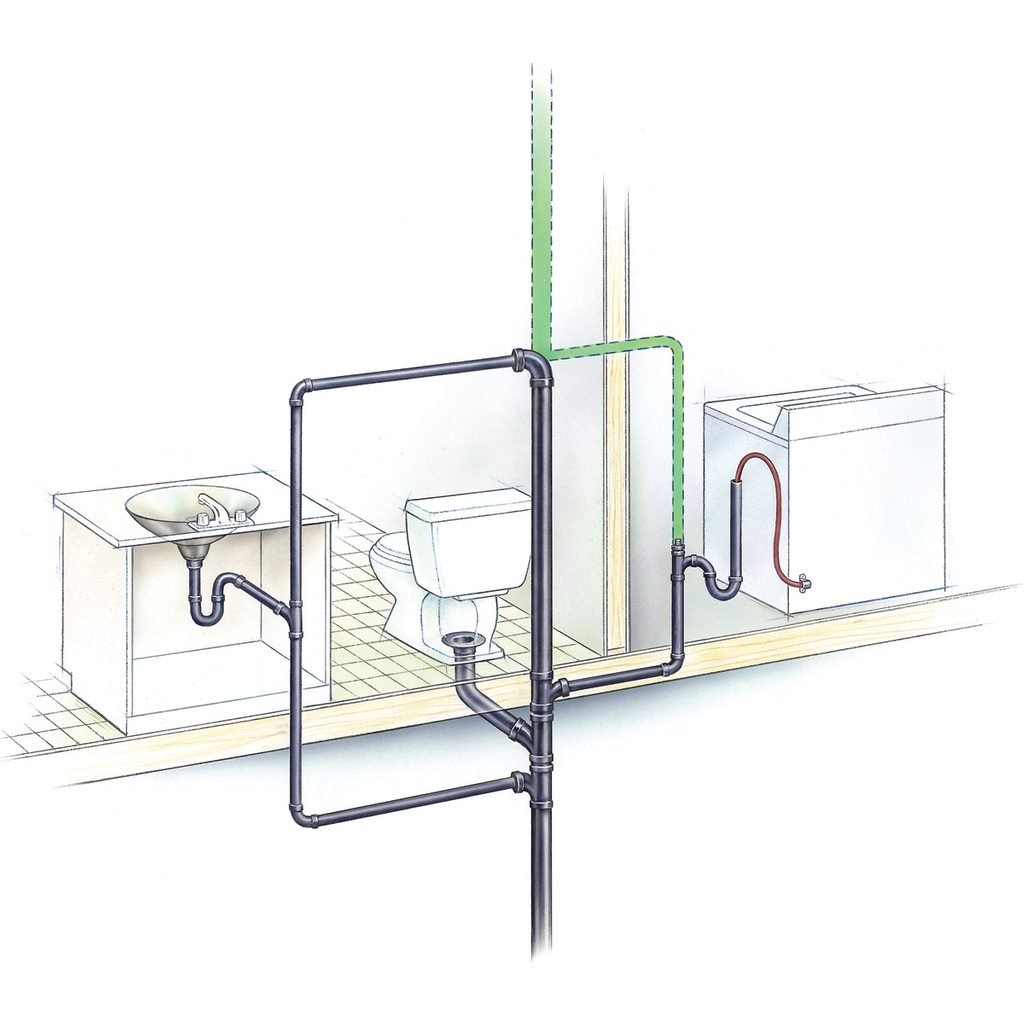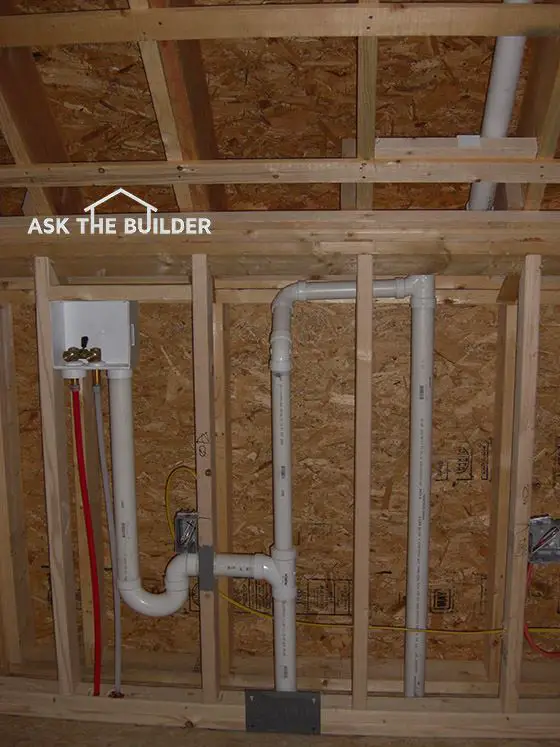The article which follows in relation to Why Plumbing Air Vents Are Important is without a doubt remarkable. Read it for yourself and figure out what you think of it.

Proper air flow in pipes systems is commonly overlooked, yet it is critical for maintaining the performance and safety of your home's plumbing. Air flow aids regulate air pressure, protect against the buildup of unsafe gases, and make certain the effective elimination of waste. In this overview, we will discover the relevance of proper plumbing ventilation, how it functions, and the advantages it offers your plumbing system.
Understanding Air Flow in Pipes
Air flow in pipes describes the network of pipelines that enable air to stream with the drain system. These vents serve multiple objectives, consisting of controling air pressure within the pipes, preventing sewage system gases from going into the home, and aiding in the smooth circulation of wastewater.
Exactly How Ventilation Functions in Plumbing Equipments
Air Pressure Policy
Appropriate ventilation preserves well balanced atmospheric pressure within the pipes system. When water streams via pipelines, it displaces air. Without appropriate air flow, this displacement can create unfavorable stress, leading to reduce drains or siphoning of water from traps, which can cause undesirable odors to seep into the home.
Protecting Against Sewer Gas Buildup
Among one of the most essential functions of plumbing vents is to stop sewage system gases, such as methane and hydrogen sulfide, from building up within the home. These gases can pose severe health and wellness threats and are highly flammable. Vent pipes allow these gases to leave safely outside.
Helping in Waste Removal
Ventilation helps in the effective removal of wastewater by avoiding airlocks in the drainage system. When air can flow freely via the vents, it enables water and waste to move smoothly with the pipelines, minimizing the threat of blockages and back-ups.
Sorts Of Plumbing Vents
Main Stack Vent
The major stack vent, likewise known as the air vent pile, is the primary air vent in a pipes system. It prolongs from the major drain align through the roof covering, enabling gases to run away and fresh air to enter the system.
Branch Vent
Branch vents link to the major stack vent and offer specific fixtures, such as sinks, toilets, and showers. These vents make sure that each component has adequate ventilation to function effectively.
Air Admittance Shutoff (AAV).
An Air Admittance Valve (AAV) is a one-way valve that allows air to get in the pipes system without the requirement for a conventional vent pipe extending through the roofing system. AAVs are typically used in renovations or locations where setting up a conventional vent is impractical.
Indications of Poor Ventilation in Plumbing.
Slow Draining Fixtures.
If your sinks, tubs, or toilets are draining slowly, maybe an indication of poor air flow. Insufficient air flow can develop a vacuum impact, making it challenging for water to drain pipes effectively.
Gurgling Seems.
Gurgling audios coming from drains pipes are typically a result of air being drawn through water traps due to unfavorable stress in the pipelines. This is a clear indicator of inadequate air flow.
Undesirable Smells.
Sewage system smells inside your home are a warning that your pipes system is not properly ventilated. This could suggest that sewer gases are not being properly aired vent outside, leading to potentially hazardous conditions.
Usual Ventilation Errors.
Poor Vent Sizing.
Utilizing undersized vent pipes can lead to poor air flow and stress inequalities in the system. It's necessary to utilize vents that fulfill the details requirements of your pipes system.
Improper Vent Placement.
Putting vents as well much from the fixtures they offer can reduce their effectiveness. Proper placement guarantees that air can move openly and effectively via the system.
Disregarding Code Needs.
Building codes provide specific standards for plumbing ventilation. Ignoring these codes can lead to a system that falls short to operate properly and may cause pricey repair services or carcinogen.
Benefits of Appropriate Air Flow.
Boosted System Performance.
Correctly ventilated plumbing systems operate a lot more successfully, with less obstructions, faster draining pipes, and much less pressure on the pipelines. This effectiveness prolongs the life expectancy of the pipes system.
Improved Air Top Quality.
By avoiding drain gases from entering your home, correct air flow adds to much better indoor air quality, making your living setting healthier and a lot more comfy.
Stopping Water Damage.
Sufficient air flow helps protect against water from being siphoned out of catches, which can bring about sewer gases getting in the home and triggering water damage with time.
Actions to Guarantee Correct Ventilation.
Consulting Plumbing Codes.
Always get in touch with local plumbing codes when making or modifying your plumbing system. These codes provide the essential guidelines for proper airing vent and ensure your system meets safety and security requirements.
Regular Evaluation and Upkeep.
Normal examinations can help identify potential air flow problems before they come to be major problems. Upkeep tasks, such as cleaning up vent pipelines and checking for blockages, are important for maintaining the system in good working order.
Professional Installment.
For new setups or major modifications, it's smart to work with a professional plumber. They have the expertise to make sure the air flow system is properly designed and mounted according to code.
Conclusion.
Appropriate ventilation is an essential element of any kind of pipes system, ensuring that it works successfully and safely. By recognizing the value of ventilation, recognizing the indicators of inadequate air flow, and taking steps to preserve your system, you can stop expensive problems and safeguard your home's air quality.
What is a Plumbing Vent and it's used for?All plumbing systems in residential and commercials construction have a plumbing vent. It doesn’t just vent unwanted odors from the drainage system to the outside; it actually serves an important purpose by supplying air to the system.
The plumbing drainage system is actually called a drainage, waste and vent (DWV) system. When water flows down the piping, an air supply (vent) is needed to allow the water to flow. Think of the vertical pipe as a drinking straw. If you plug the top end of a straw, liquid won’t drain from it.
The DWV system in your building consists of a series of pipes connected to each fixture; they extend above each fixture, and the system terminates at an open pipe that extends through the roof. This piping allows air into the system and prevents unbalanced pressures in the piping.
?The vent also prevents the system from drawing water out of a trap at the fixture with the characteristic “glug-glug-glug” as the drain gasps for air. Plumbing traps should drain smoothly and never “glug” or gasp for air.
If you have a drain that empties slowly or gurgles as it drains, this may indicate a venting problem. If you flush a toilet and the sink gurgles, there’s definitely a vent problem. It is good idea to have a Plumber check this.
https://www.ameliashomeinspection.com/blog/what-is-a-plumbing-vent-and-its-used-for

Hopefully you liked our part about What Is A Plumbing Vent & How Do They Work?. Many thanks for taking a few minutes to read our blog. Make sure you take a moment to distribute this entry if you enjoyed it. Thanks a bunch for being here. Kindly check our blog back soon.
This Page